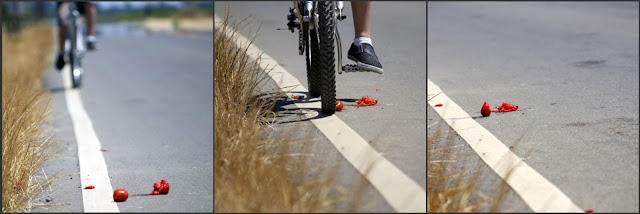Really, all you need to become a good knitter are wool, needles, hands and slightly below-average intelligence. Of course superior intelligence, such as yours and mine, is an advantage.~Elizabeth Zimmermann
Today would have been Elizabeth Zimmermann's 100th birthday. If you're a knitter, EZ is likely a familiar name. If you're not a knitter, Elizabeth Zimmermann is still worth knowing about, in the way that all innovative people transcend the boundaries of their fields.
There was a period when I was never without a knitting project in my hands. I tore through hats and socks and miniature sweaters. I began to knit preemie infant caps for the local hospital, simply to justify my need to twirl yarn through sticks. I don't think I was probably a very friendly person. Talking wasn't of interest, unless it was talk about knitting.
The same was true of books, and it was my good fortune that the first knitting book I ever read was Knitting Without Tears by Elizabeth Zimmermann.
The book begins:
The same was true of books, and it was my good fortune that the first knitting book I ever read was Knitting Without Tears by Elizabeth Zimmermann.
The book begins:
You can imagine how my heart jumped reading these paragraphs. This was a person whom I would have actively chosen as a friend: funny, articulate, passionate, and charmingly self-deprecating. She advocated wool over synthetics, keeping a loose gauge, making swatches, using the humble garter stitch.Most people have an obsession; mine is knitting.Your hobby may be pie-baking, playing the piano, or potbelly-stove collecting, and you can sympathize with my enthusiasm, having an obsession of your own. Will you forgive my single-mindedness and my tendency to see knitting in everything?Carvings and sculpture remind me only of Aran and other textured designs; when I see a beautiful print my first thought is how it would adapt to color pattern knitting; confronted by a new fashion, I immediately start drawing in the air with my forefinger to see if it would suit itself to knitting, and if so, how—which way the grain should run, if the shape could be knitted in, and what stitch would be most effective.So please bear with me, and put up with my opinionated, nay, sometimes cantankerous attitude. I feel strongly about knitting.
Most importantly, Elizabeth Zimmermann advocated experimentation and play. If she made a mistake, she would look at the possibilities in it. In this way, she came up with many new techniques and designs—including the i-cord, circular sweater knitting, and a mathematical system of sweater design—yet she refused to credit herself, certain that somewhere in time, someone else must have come up with the same idea. Instead, she called what she did "unventing."
Recently I discovered some of her dvds through our local libraries. Like her books, they are a mixture of ingenious technique and a complete lack of pretension. The camera catches the cat sneezing as Elizabeth and her daughter Meg break into laughter; it pans over to watch her husband Arnold working in the shed. Playing the dvds is like sitting down at a neighbor's house—a neighbor who just happens to be a master knitter.
And this neighbor also wants to encourage you to be your best. She tells you, "...be your own designer. No two people knit alike, look alike, think alike; why should their projects be alike?" She's unfazed by the bizarre way you hold your needles, the fact that somewhere along the way you lost several stitches, by the glaring mistake in the second row of your nearly-completed sweater. It's all knitting, knitting is what she loves and like a mother who sees only the best in her children (Elizabeth had three), she thinks it is just fine and always knows how to mend the trouble.
Improvise, but observe what happens. Develop technique without becoming a slave to it. Love what you do, and do what you love. Have confidence—just don't let your ego run wild. It's knitting, and it's more. Read into Elizabeth Zimmermann what you will.
And this neighbor also wants to encourage you to be your best. She tells you, "...be your own designer. No two people knit alike, look alike, think alike; why should their projects be alike?" She's unfazed by the bizarre way you hold your needles, the fact that somewhere along the way you lost several stitches, by the glaring mistake in the second row of your nearly-completed sweater. It's all knitting, knitting is what she loves and like a mother who sees only the best in her children (Elizabeth had three), she thinks it is just fine and always knows how to mend the trouble.
Improvise, but observe what happens. Develop technique without becoming a slave to it. Love what you do, and do what you love. Have confidence—just don't let your ego run wild. It's knitting, and it's more. Read into Elizabeth Zimmermann what you will.
To repeat myself—experiment.~Elizabeth Zimmermann








